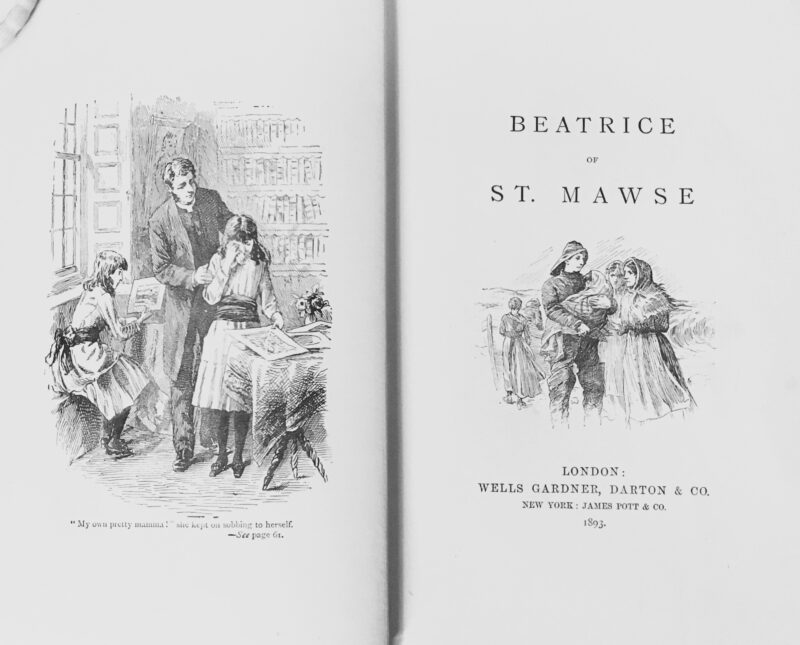Library member and PhD student, Kensa Broadhurst, has delved into the world of early Cornish Fiction, and uncovered some delights you may wish to explore yourself….

Over the past year I have been working my way steadily through the Cornish fiction collection in the Jenner room. I should perhaps clarify this a little. I am currently in the final stages of a PhD researching the use of the Cornish language between 1777-1904. As part of this research, I was interested to see if any of the novels written in or about Cornwall pre-1904 either mention the language or use Cornish words. This meant I was interested in reading any of the novels in the collection with a publication date before around 1910. There are some novels in the collection with no publication date in them. To be on the safe side, I did borrow these. Often it was easy to tell if the novel must have been written later in the twentieth century through the context.
These criteria meant I could avoid the shelves full of the works of Daphne du Maurier and Winston Graham, but it has still taken me the best part of year to work my way through the relevant books from the collection alongside my other studies. This may give you some idea as to the size of the Cornish fiction collection housed in the library (I’m a quick reader!). Although there are novels by authors who had been inspired by a visit they had made to Cornwall, many of the books are by Cornish authors and are specifically based in West Penwith.
Unsurprisingly for novels set in West Penwith either in the nineteenth century or earlier, several themes emerge: Methodism, mining, smuggling and wrecking feature heavily, alongside many tales of unrequited love and quite a few mining accidents. For people interested in the social history of Cornwall in the nineteenth century, these novels are a real treasure trove. There are also several novels which detail the adventures of young girls who are shipwrecked on the Cornish coast, rescued, and grow up unaware of their true identity, only for everything to be resolved perfectly at the end with a hugely coincidental reveal! A couple of examples of these include Mona the Fisher Girl by H.S. Streatfeild and Beatrice of St Mawse [no named author].

There are novels by well-known novelists such as Deep Down by R.M. Ballantyne, the Scottish author best remembered for The Coral Island. He came to Cornwall to research tin mining for this novel. There are also many novels by the Reverend Sabine Baring-Gould from Devon. He was well-known as a writer of hymns and served as President of the Royal Institution of Cornwall. Examples of his novels include Guavas the Tinner and The Crock of Gold. Famous Cornish novelists such as Katharine Lee, the Hocking siblings, and William Sandys also feature prominently.

So would I recommend a delve into nineteenth century Cornish fiction as a change from your usual reading fare? There are some gems to be discovered. If you like an adventure story filled with derring-do try Queen of the Guarded Mounts by John Oxenham which is set on St Michael’s Mount and Mont-Saint-Michel during the French Revolution. If you want a bit of romance in the Cornish landscape, there’s Kynance Cove by William Bentinck Forfar. For some insight into life in Cornwall at this period see E.A. Bonham’s A Corner of Old Cornwall or Mrs Havelock Ellis’s My Cornish Neighbours. Or perhaps just show some neglected books some love – in many cases I was evidently the only person who had borrowed these novels for decades!
